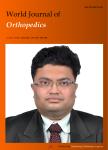Analysis of a ten step protocol to decrease postoperative spinal wound infections
Analysis of a ten step protocol to decrease postoperative spinal wound infections作者机构:Department of Orthopedics and Infectious DiseasesUniversity of Toledo Medical Center
出 版 物:《World Journal of Orthopedics》 (世界骨科杂志(英文版))
年 卷 期:2018年第9卷第11期
页 面:271-284页
学科分类:0403[教育学-体育学] 1002[医学-临床医学] 10[医学]
主 题:Wound infections Spine Ten step protocol Surgical site infections
摘 要:AIM To define a ten-step protocol that reduced the incidence of surgical site infection in the spine surgery practice of the senior author and evaluate the support for each step based on current *** In response to unexplained increased infection rates at our institution following spine surgery,a ten-step protocol was implemented:(1) preoperative glycemic management based on hemoglobin A1 c(HbA1 c);(2) skin site preoperative preparation with 2% chlorhexidine gluconate disposable cloths;(3) limit operating room traffic;(4) cut the number of personnel in the room to the minimum required;(5) absolutely no flash sterilization of equipment;(6) double-gloving with frequent changing of outer gloves;(7) local application of vancomycin powder;(8) re-dosing antibiotic every 4 h for prolonged procedures and extending postoperative coverage to 72 h for high-risk patients;(9) irrigation of subcutaneous tissue with diluted povidone-iodine solution after deep fascial closure; and(10) use of Dura Prep skin preparation at the end of a case before skin closure. Through an extensive literature review,the current data available for each of the ten steps was *** Use of vancomycin powder in surgical wounds,routine irrigation of surgical site,and frequent changing of surgical gloves are strongly supported by the literature. Preoperative skin preparation with chlorhexidine wipes is similarly supported. The majority of current literature supports control of HbA1 c preoperatively to reduce risk of infection. Limiting the use of flash sterilization is supported,but has not been evaluated in spine-specific surgery. Limiting OR traffic and number of personnel in the OR are supported although without level 1 evidence. Prolonged use of antibiotics postoperativelyis not supported by the literature. Intraoperative use of Dura Prep prior to skin closure is not yet *** The ten-step protocol defined herein has significantly helped in decreasing surgical site



